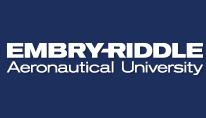T1-E: Space Systems Engineering in Undergraduate Education
Location
Dolphin
Start Date
5-3-2018 10:00 AM
Description
Engineering design for harsh constraints such as those faced in space environments provides a unique means for students to experience real-world design. An experiential learning course designed to introduce undergraduate students to the space sciences, engineering design with harsh constraints, and active learning through critique of technical literature and fieldwork is discussed. The University of Tennessee at Chattanooga’s electrical engineering course, Embedded Systems for Space Applications, provides a means for students to learn difficult topics through deliberate practice and mentorship from graduate researchers and faculty. Two primary learning methods are utilized: hands-on learning through the design, prototyping, and development of a nanosatellite or high-altitude balloon payload, and student-driven review and critique of technical literature. Local community and K-12 partnerships broaden the impacts of the effort by providing outreach and collaborative opportunities in addition to the dissemination of student-designed product for enhancing education in the space sciences.
T1-E: Space Systems Engineering in Undergraduate Education
Dolphin
Engineering design for harsh constraints such as those faced in space environments provides a unique means for students to experience real-world design. An experiential learning course designed to introduce undergraduate students to the space sciences, engineering design with harsh constraints, and active learning through critique of technical literature and fieldwork is discussed. The University of Tennessee at Chattanooga’s electrical engineering course, Embedded Systems for Space Applications, provides a means for students to learn difficult topics through deliberate practice and mentorship from graduate researchers and faculty. Two primary learning methods are utilized: hands-on learning through the design, prototyping, and development of a nanosatellite or high-altitude balloon payload, and student-driven review and critique of technical literature. Local community and K-12 partnerships broaden the impacts of the effort by providing outreach and collaborative opportunities in addition to the dissemination of student-designed product for enhancing education in the space sciences.


